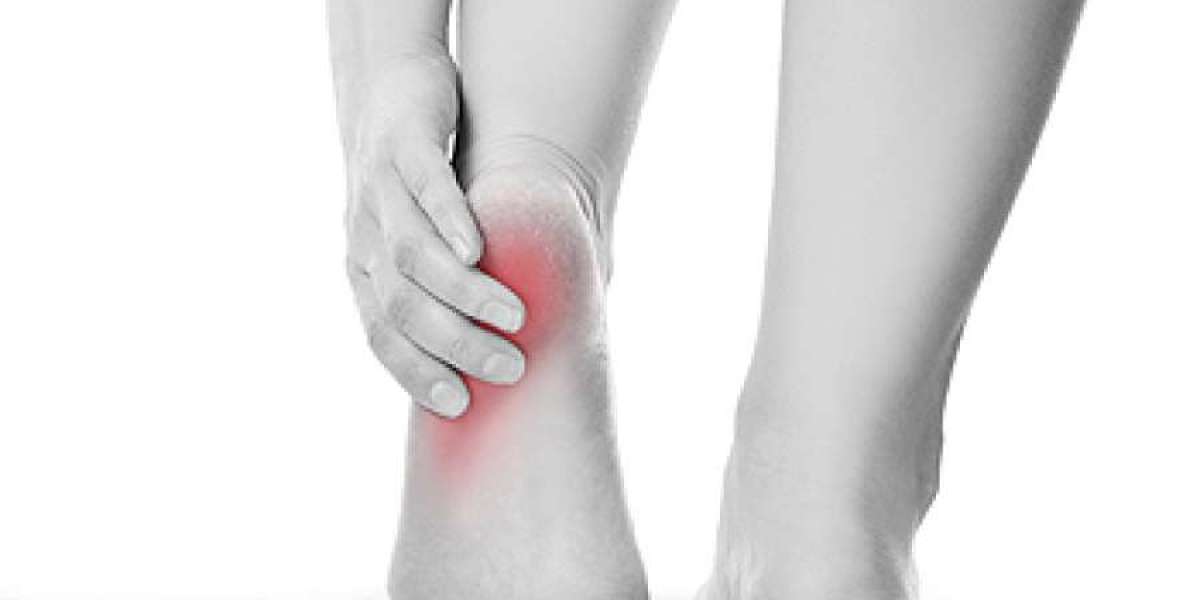For athletes, the pursuit of peak performance often comes with the risk of encountering heel pain. Whether caused by overuse, biomechanical issues, or specific sports-related injuries, heel pain can be a formidable opponent. This article explores the athlete's arsenal—a collection of strategies and techniques tailored to manage and mitigate heel pain within the dynamic realm of sports. From preventive measures to targeted treatments, discover the game-changing tactics that empower athletes to conquer heel discomfort and excel in their chosen disciplines.
*1. The Heel's Role in Athletic Performance: Understanding the Impact
Dynamic Weight Distribution:
- Recognizing the crucial role the heel plays in weight distribution during athletic activities.
- Understanding the impact of forceful landings, sudden accelerations, and directional changes.
Biomechanics and Gait Analysis:
- Utilizing biomechanical assessments and gait analysis to understand individual foot mechanics.
- Identifying irregularities that may contribute to heel pain during sports-related movements.
*2. Proactive Prevention: Guarding Against Heel Pain On the Field
Proper Warm-Up Routines:
- Incorporating comprehensive warm-up routines before engaging in sports activities.
- Dynamic stretches, joint mobilization, and light cardio exercises to prepare the feet for dynamic movements.
Footwear Selection for Athletic Endeavors:
- Choosing sports-specific footwear with adequate arch support and cushioning.
- The impact of cleats, running shoes, and court shoes on foot stability and performance.
*3. Biomechanical Assessments: Tailoring Strategies Based on Individual Needs
Professional Gait Analysis:
- Seeking professional gait analysis to identify biomechanical irregularities.
- Customizing strategies based on individual gait patterns and foot mechanics.
Orthotic Interventions:
- Exploring custom orthotic solutions for personalized support during sports activities.
- Orthotic inserts designed to address specific biomechanical issues and enhance performance.
*4. Conditioning the Feet: Strengthening and Supporting Athletic Foundations
Targeted Strengthening Exercises:
- Implementing targeted exercises to strengthen the intrinsic muscles of the feet.
- Incorporating resistance training for the calves, ankles, and toes to enhance overall foot strength.
Balance and Stability Workouts:
- Including balance and stability exercises to improve proprioception.
- Enhancing the athlete's ability to maintain control during dynamic movements.
*5. Sports-Specific Training Modifications: Adapting to Alleviate Strain
Surface Considerations:
- Adapting training routines based on the surfaces athletes engage with.
- Recognizing the impact of hard surfaces, uneven terrain, or synthetic fields on heel health.
Alternating Intensity and Duration:
- Implementing training variations to prevent overuse injuries.
- Alternating between high-intensity and low-intensity sessions to allow for adequate recovery.
*6. Immediate Post-Activity Care: Nipping Heel Pain in the Bud
Icing and Compression Techniques:
- Applying ice and compression immediately after sports activities.
- Mitigating inflammation and reducing swelling to address acute heel pain.
Elevating the Feet:
- Incorporating foot elevation as part of post-activity recovery.
- Enhancing blood circulation and minimizing fluid accumulation around the heel.
*7. Sports Massage for Heel Recovery: The Healing Touch
Deep Tissue Massage:
- Incorporating deep tissue massage to alleviate tension in the plantar fascia.
- Addressing tightness and promoting flexibility for enhanced athletic performance.
Trigger Point Therapy:
- Utilizing trigger point therapy to identify and release tension in specific areas.
- Focusing on trigger points that may contribute to heel pain during sports activities.
*8. Foot Taping and Bracing: Providing Dynamic Support During Play
Taping Techniques:
- Exploring taping methods to provide dynamic support to the feet.
- The strategic application of tape to stabilize the heel and prevent excessive movement.
Sports-Specific Bracing:
- Incorporating sports-specific braces for additional support.
- Customizing bracing options based on the type of sports activity and individual needs.
*9. Footwear Adjustments: Fine-Tuning for Optimal Athletic Performance
Lacing Techniques:
- Utilizing specific lacing techniques to address foot concerns.
- Techniques such as the heel lock or window lacing to enhance stability and prevent slippage.
Insole Replacements:
- Experimenting with different insole options to find the most supportive fit.
- Replacing stock insoles with those designed for enhanced arch support and shock absorption.
*10. Hydration and Nutrition: Fueling Heel Health from the Inside Out
Hydration Importance:
- Recognizing the role of hydration in maintaining optimal tissue function.
- Proper fluid intake to support joint lubrication and reduce the risk of cramping.
Anti-Inflammatory Nutrition:
- Embracing an anti-inflammatory diet to address chronic heel pain.
- Incorporating foods rich in omega-3 fatty acids, antioxidants, and vitamins with anti-inflammatory properties.
*11. Monitoring and Modifying Training Loads: Preventing Overuse Injuries
Listening to the Body:
- Encouraging athletes to pay attention to early signs of discomfort.
- Recognizing the importance of rest and modification when heel pain is detected.
Periodization Strategies:
- Implementing periodization strategies to optimize training loads.
- Balancing intense training periods with adequate rest to prevent overuse injuries.
*12. Foot-Friendly Cross-Training: Diversifying for Comprehensive Fitness
Low-Impact Alternatives:
- Exploring low-impact cross-training options to minimize stress on the heels.
- Activities such as swimming, cycling, or elliptical training as alternatives to high-impact sports.
Flexibility and Mobility Training:
- Incorporating flexibility and mobility training into cross-training routines.
- Enhancing overall joint health and reducing the risk of heel-related issues.
*13. Professional Consultation: Collaborating with Sports Medicine Experts
Podiatric Consultations:
- Seeking guidance from podiatrists specializing in sports-related foot issues.
- Collaborating with podiatric experts for in-depth assessments and personalized heel pain management plans.
Sports Physiotherapy:
- Engaging with sports physiotherapists to address biomechanical concerns.
- Customized rehabilitation programs to improve strength, flexibility, and overall foot function.
*14. Sports-Specific Rehabilitation: Tailoring Interventions for Heel Conditions
Condition-Centric Exercises:
- Designing rehabilitation programs tailored to specific heel conditions.
- Addressing issues such as plantar fasciitis, Achilles tendonitis, or stress fractures with targeted exercises.
Gradual Return to Play Protocols:
- Implementing gradual return to play protocols after a period of heel pain.
- Ensuring athletes resume activities with caution and under professional guidance.
*15. Educational Empowerment: Equipping Athletes with Heel Health Knowledge
Understanding Common Heel Conditions:
- Providing athletes with information on common heel conditions in sports.
- Enhancing awareness of plantar fasciitis, Achilles tendonitis, and other potential issues.
Footwear Education:
- Educating athletes on the impact of footwear choices on heel health.
- Empowering them to make informed decisions for optimal performance and comfort.
*16. Community Support: Sharing Strategies Among Athletes
Online Platforms and Forums:
- Participating in online platforms and forums dedicated to sports-related foot health.
- Sharing personal experiences, strategies, and success stories for mutual support.
Teamwork and Peer Encouragement:
- Fostering a culture of teamwork and peer encouragement within sports communities.
- Collaborating with teammates to implement preventive measures and share insights.
*17. Conclusion: Conquering Heel Pain to Achieve Sporting Excellence
In the relentless pursuit of sporting excellence, conquering heel pain becomes an integral part of an athlete's journey. By assembling an arsenal of strategies, from preventive measures to targeted treatments, athletes empower themselves to navigate the challenges posed by heel discomfort. As the game-changing tactics are employed and refined, the path to enduring heel health aligns seamlessly with the pursuit of peak athletic performance.








